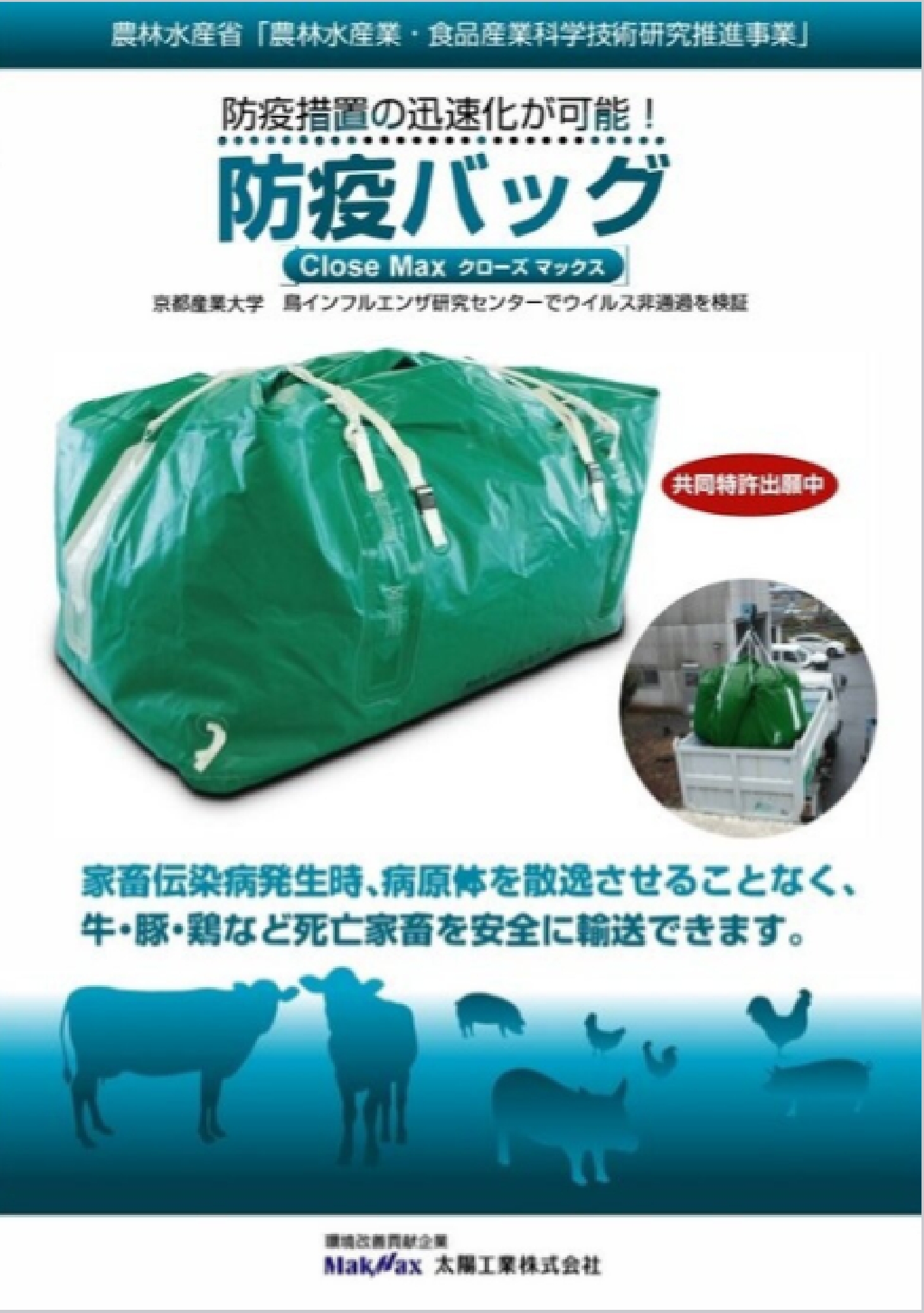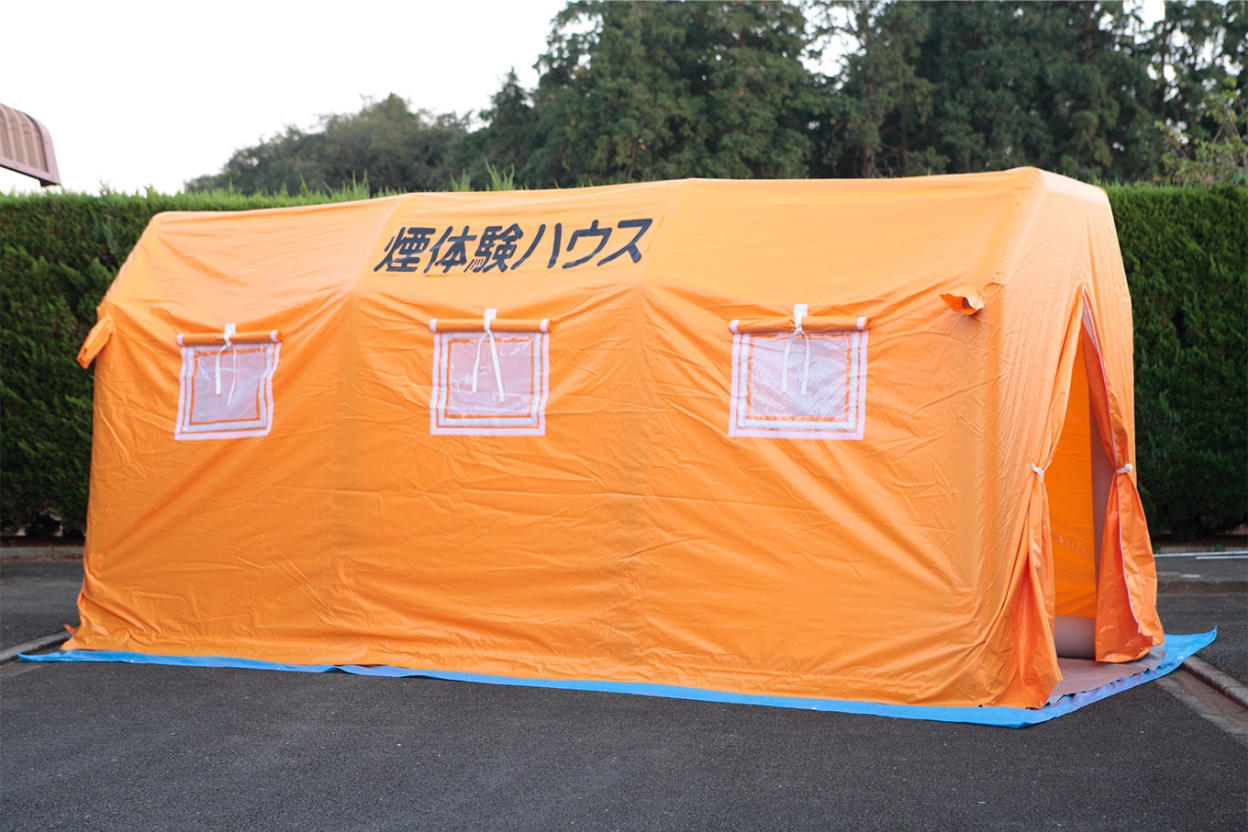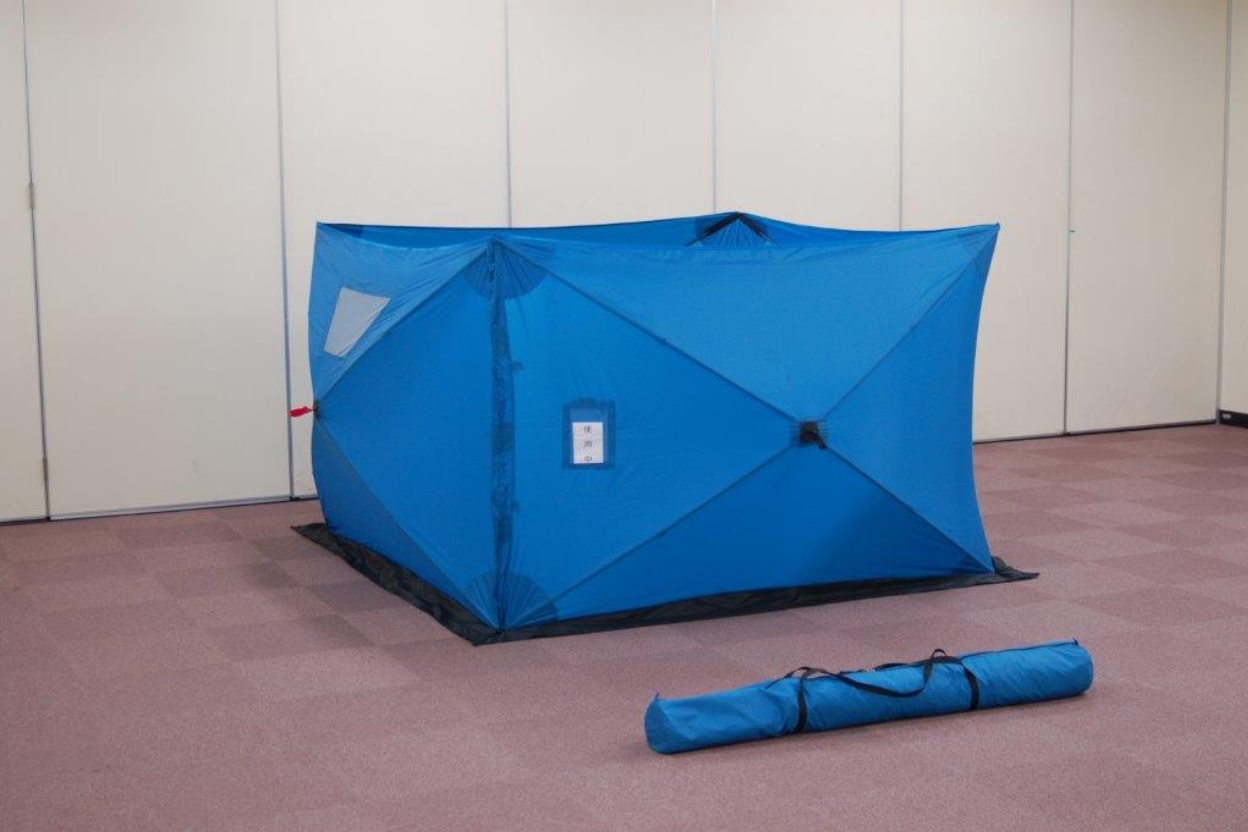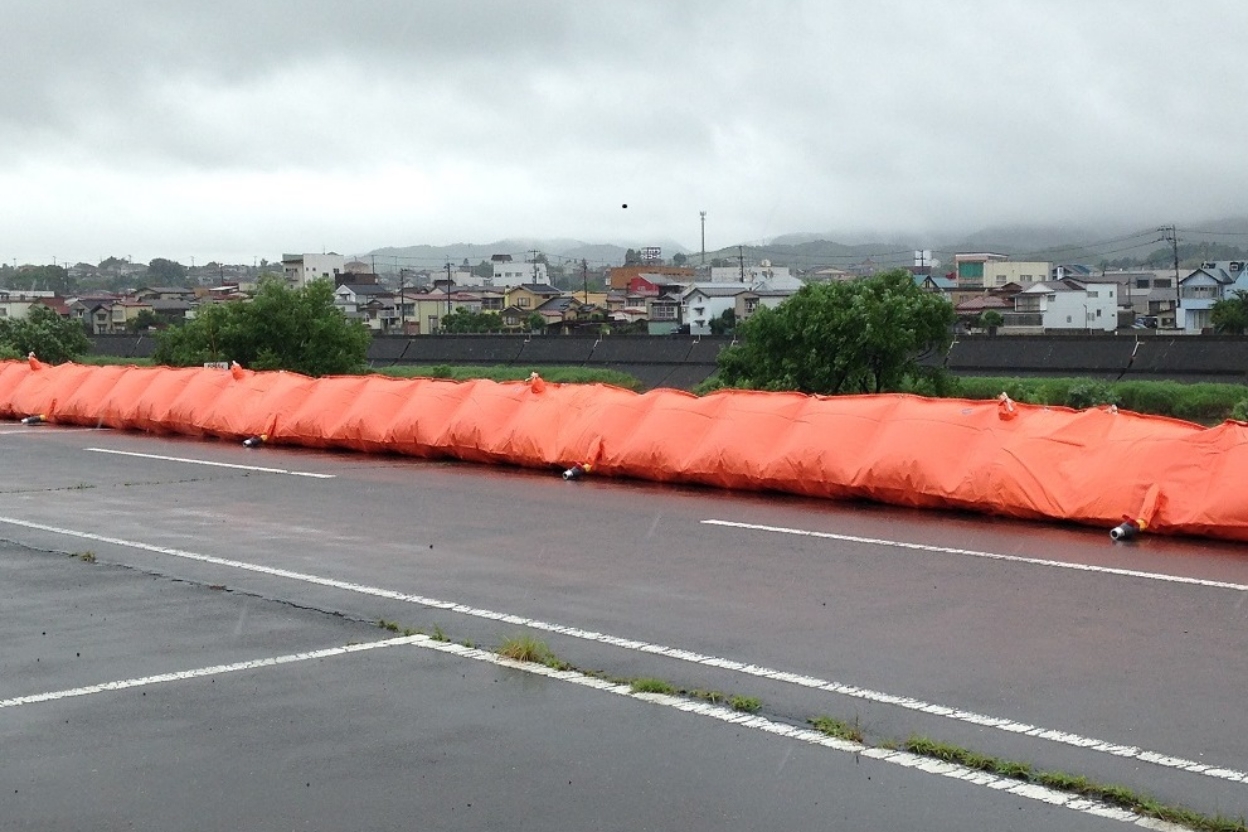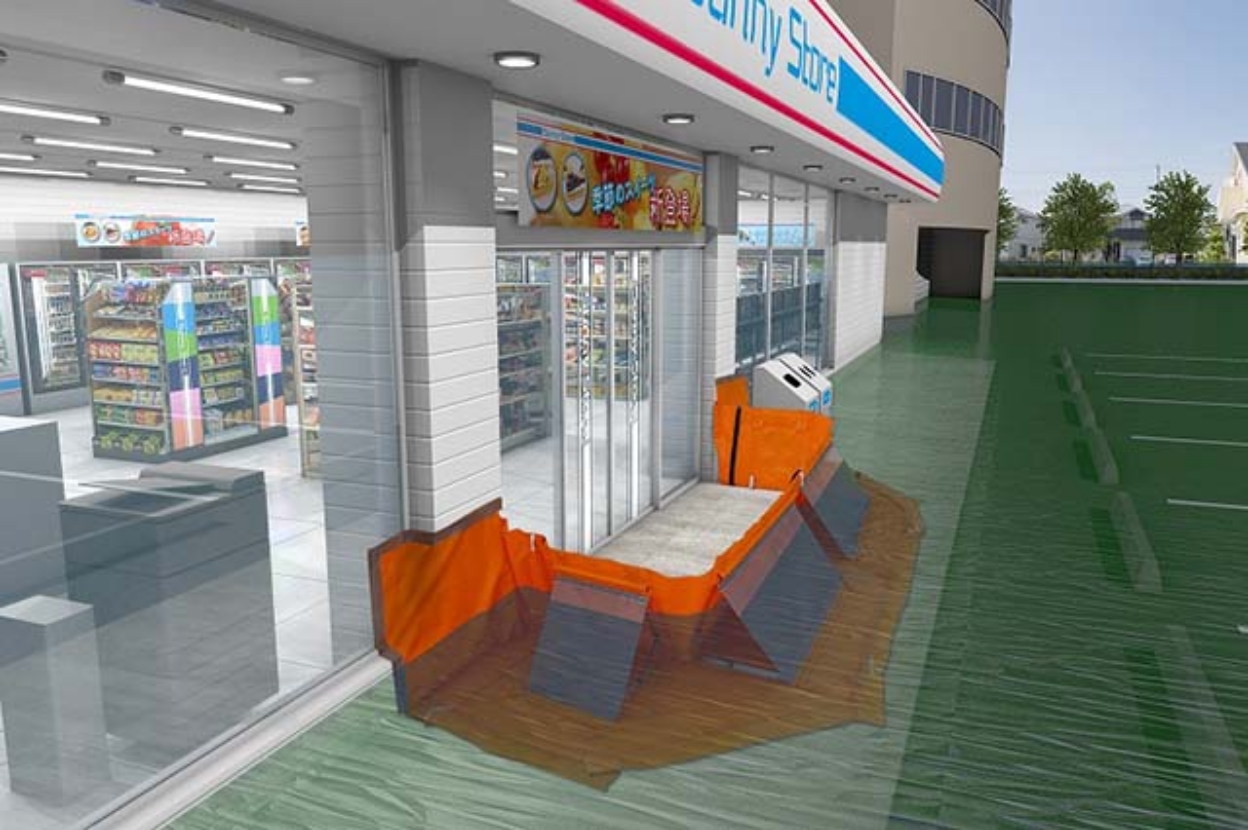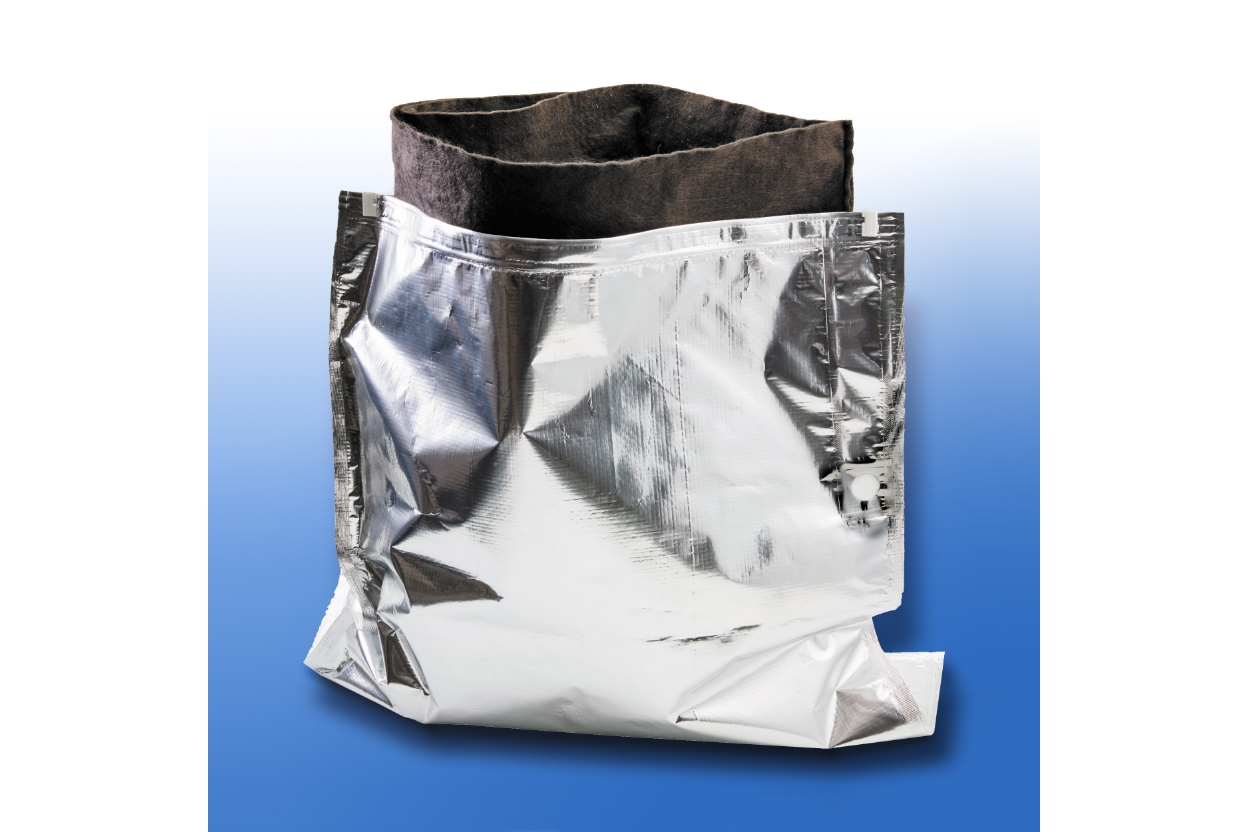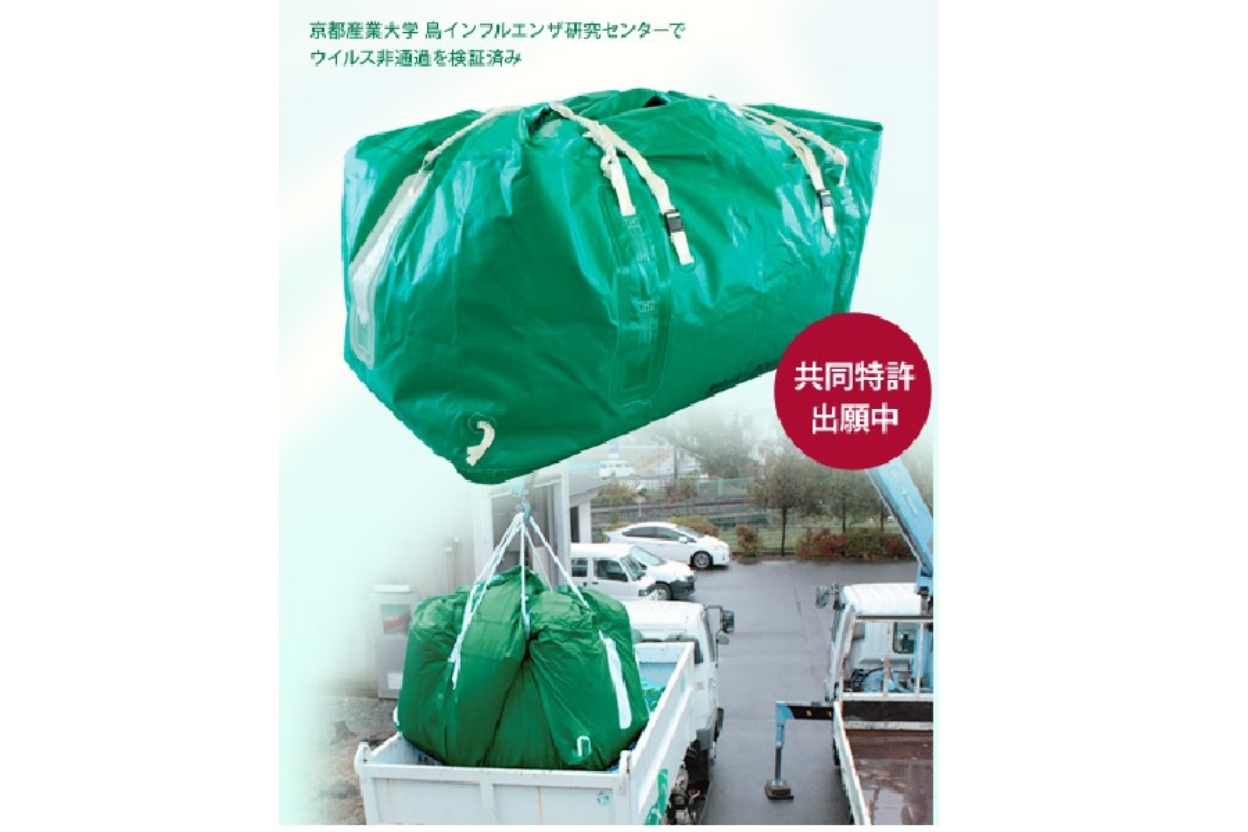
"Close Max" -Quarantine bag-
Rapid action in the event of livestock epidemics, prevention of virus spread, and safe transportation
Preventing the spread of infectious diseases such as foot-and-mouth disease (FMD) and highly pathogenic avian influenza (HPAI) is a major challenge for livestock health personnel. To this end, it is of utmost importance to take appropriate initial responses.
Large capacity can be accommodated while containing the virus, and transporting disposed livestock without spreading the virus will minimize damage and contribute to the safety and security of livestock products.
The “Close Max” quarantine bag was jointly developed by Taiyo Kogyo, Kyoto Sangyo University (Molecular Research Center for Infectious Diseases), and Kyoto Prefecture (Livestock Production Division, Livestock Health Center, and Livestock Production Center) in an industry-academia-government collaboration under a research project by the Ministry of Agriculture, Forestry and Fisheries*. It meets the high specifications required in the field of initial response.
*Developed as part of the “Establishment of Transportation Technology for Disposed Livestock to Prevent the Spread of Livestock Infectious Diseases” under the Ministry of Agriculture, Forestry and Fisheries’ “Agriculture, Forestry, Fisheries and Food Industry Science and Technology Research Promotion Project.
*For sale only in the Japanese market
Product & Service
Ideal quarantine material for outbreaks of foot-and-mouth disease (FMD) and other livestock epidemics
Containment of pathogens through appropriate initial response is necessary to prevent the spread of livestock infectious diseases such as foot-and-mouth disease (FMD) and highly pathogenic avian influenza (HPAI). Until now, small medical waste containers, large metal cans, and blue sheets have been the materials used to contain and transport livestock that have been disposed of through quarantine measures to prevent the spread of livestock infectious diseases. Small containers cannot be used for large livestock, large metal cans require a large storage space, and blue sheets cannot seal pathogens. There were no strong quarantine materials that could contain and transport large livestock such as cattle, which can weigh up to 1,000 kg, with the pathogens contained. To overcome this situation, Taiyo Kogyo, Kyoto Sangyo University, and Kyoto Prefecture have collaborated to develop the “Close Max” quarantine bag, a quarantine material that meets the strict conditions required for initial response in the event of a livestock epidemic. Please take a look at its advanced features.
Highly sealed to contain pathogens in the event of a livestock epidemic
The aluminum inner bag of the “Close Max” quarantine bag is made of materials and processed to seal the bag against viruses as small as 30 nm (nanometers).
In addition, a gas vent valve is placed at the upper shoulder opening of the aluminum interior to release gas generated from livestock packed in the bag. This structure allows only gas to be released without allowing viruses to pass through, thereby preventing the inner bag from rupturing due to expansion.
By retrofitting the aluminum inner bag with a gas venting valve composed of a PTFE flat membrane and hollow fiber vent, which does not allow pathogens of this size to pass through, the foot-and-mouth disease virus can release only the gases generated by the disposed livestock without passing the virus.
Gas venting valve is optional.
*Virus non-passage was verified at Kyoto Sangyo University [Molecular Research Center for Infectious Diseases].
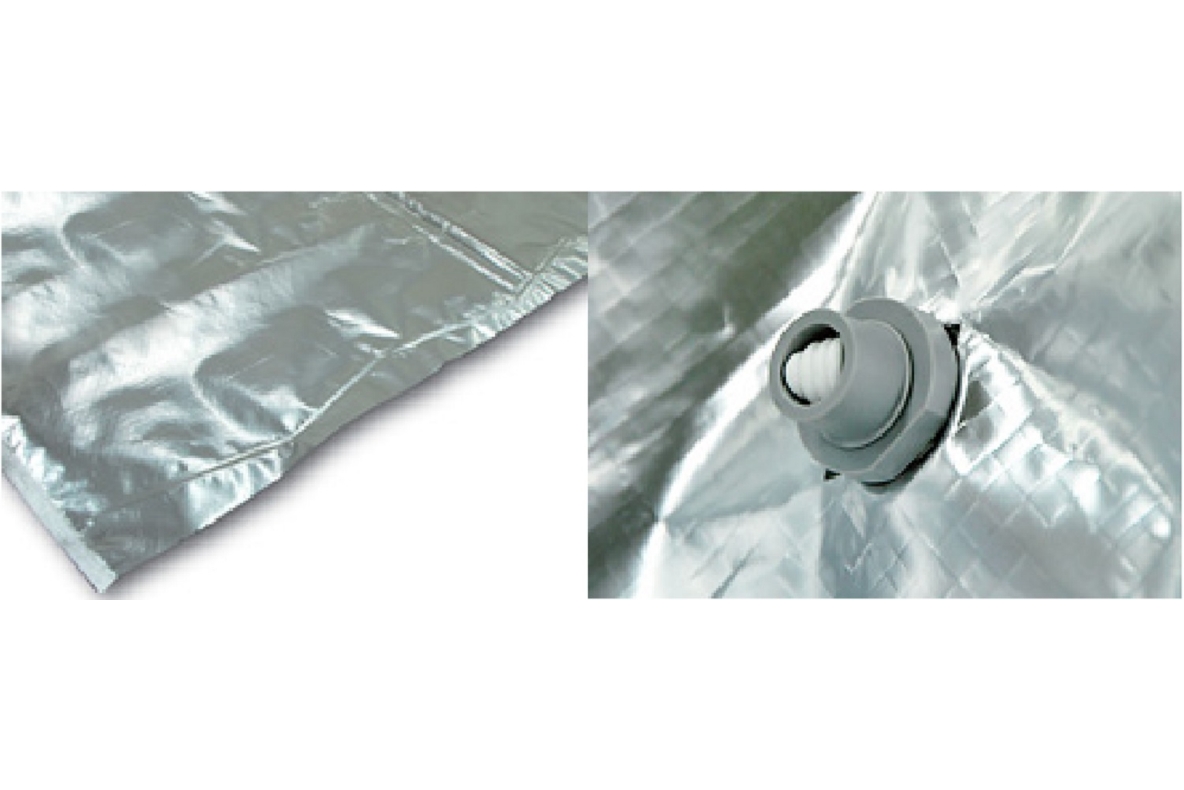
Large and strong enough to accommodate one 1,000 kg cow
The bags that contain and transport the disposed livestock must be generously sized and of high strength.
For example, it is large enough to accommodate cattle that have been disposed of to prevent the spread of foot-and-mouth disease (FMD). It must be strong enough to withstand the lifting of approximately 1,000 kg (equivalent to 1 cow, 2 pigs~, or 300-400 chickens) required to load it onto a transport vehicle. In addition, the material must not be damaged by horns, teeth, or hooves. The quarantine bag “Close Max” has sufficient capacity and strength to withstand all conditions.
In the event of a highly pathogenic avian influenza (HPAI) outbreak, the medical waste disposal containers currently in use can only hold a limited number of chicken bodies, but the Close Max quarantine bag can hold several hundred chicken bodies in a single bag. The “Close Max” quarantine bag can accommodate several hundred chicken bodies in a single bag, greatly improving work efficiency and reducing the workload of those engaged in quarantine work.
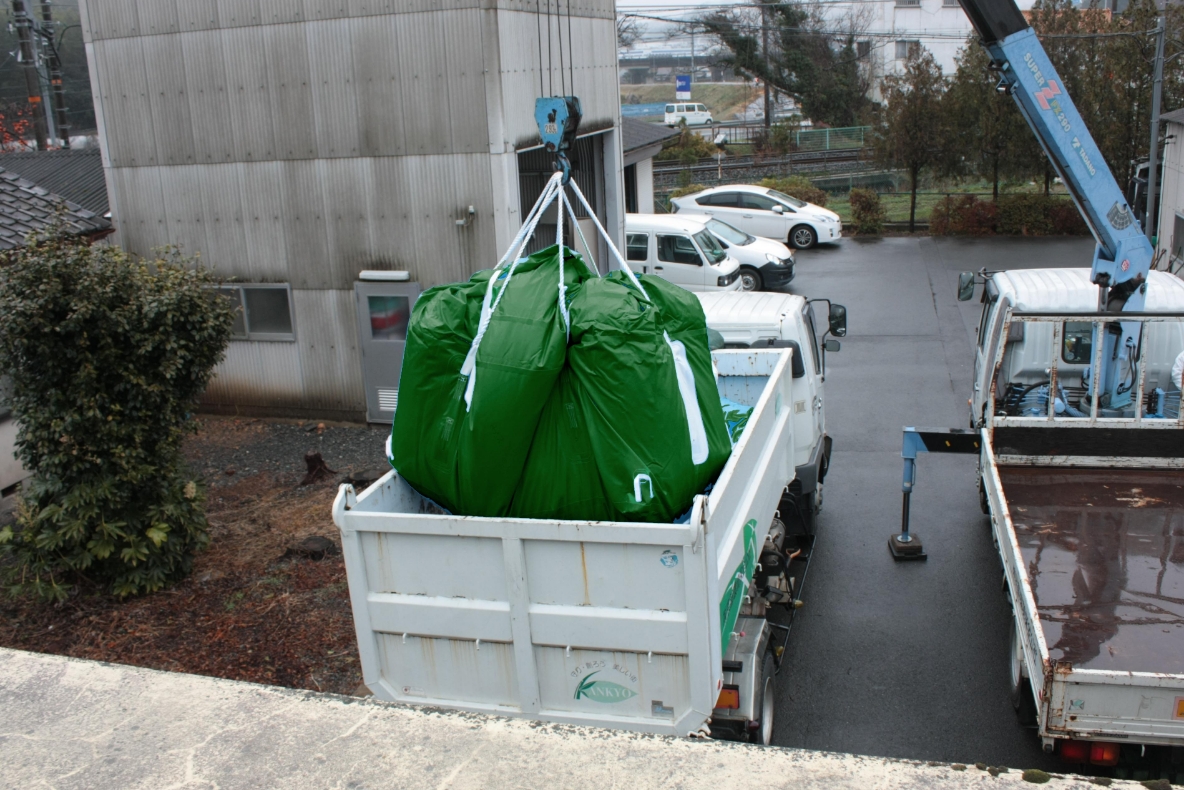
Materials and structure
Kyoto Prefecture’s extensive experience in quarantine work and our accumulated technology in membrane surface manufacturing have resulted in a structure that can be easily accommodated and sealed by anyone.
It is stable to disinfectants and does not erode materials.
Materials that do not produce toxic substances even during incineration are used. We have confirmed that dioxins and toxic substances in exhaust gases and incinerated ash are below the standards in the treatment by a large incinerator while the disposal livestock are housed.
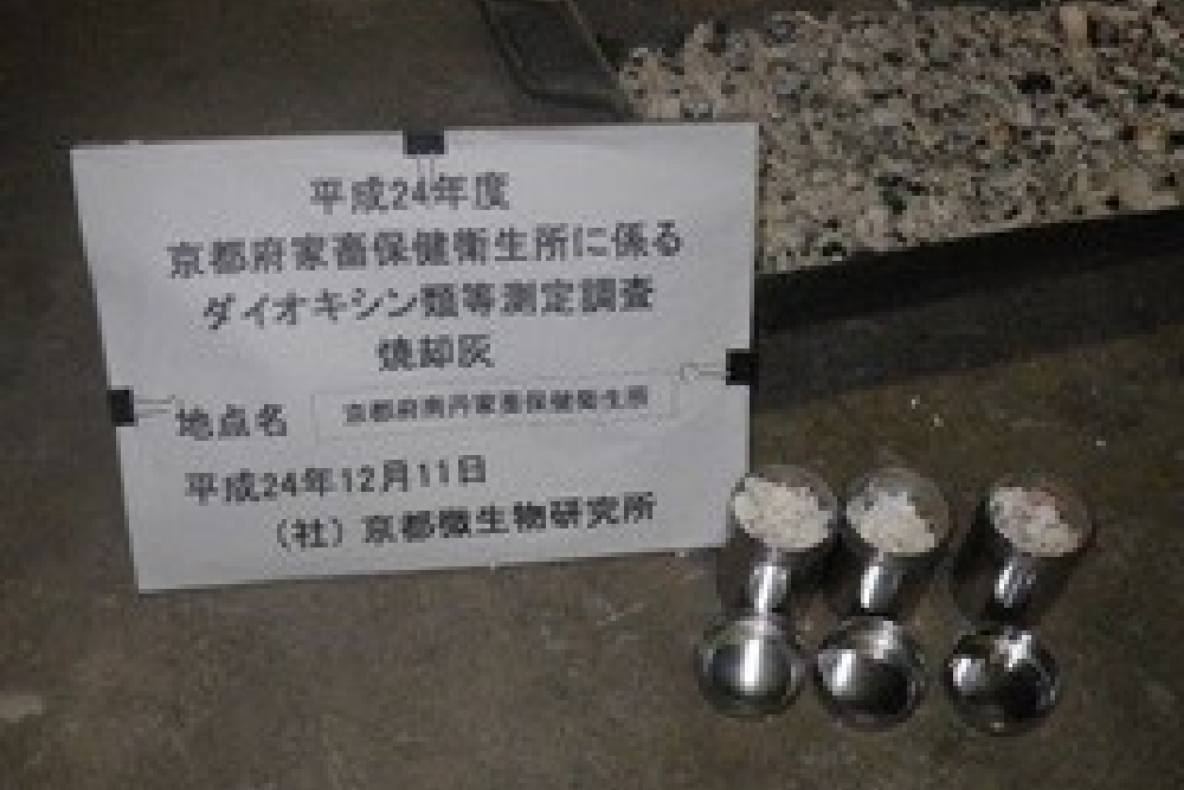
Compact design that takes up little space for storage
It is important to be able to compactly store the necessary quarantine materials when not in use, in case of an outbreak of livestock diseases or other contingencies. Large storage space is needed to stockpile the necessary quantities of medical waste disposal containers and large metal cans. However, the Close Max bag, which is made of flexible material in the form of a pouch, can be folded up to 100 cm (L) x 50 cm (W) x 25 cm (H), eliminating the need for a large storage space.
In the case of 10 sets, the pallet packaging will be 100 cm (L) x 100 cm (W) x 100 cm (H), which is the size of one steel desk.
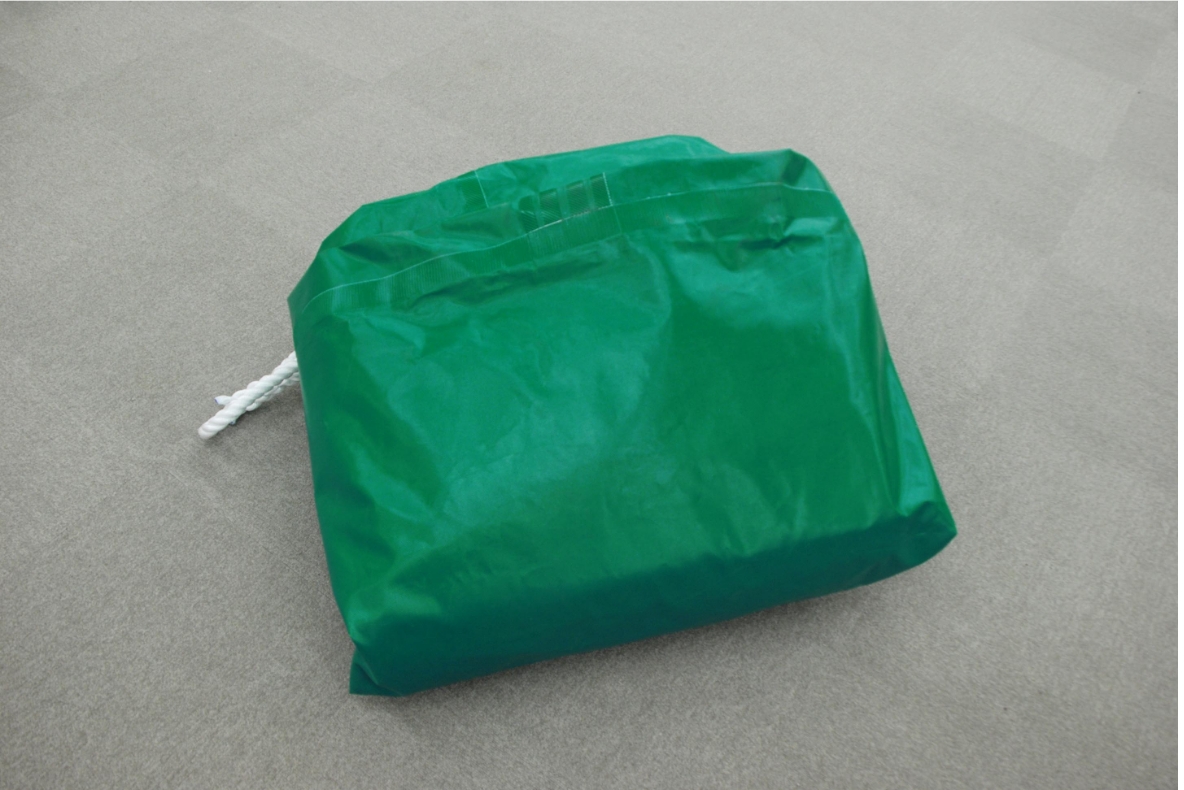
Four steps to contain, seal, and load large livestock
STEP1 Set outer bag and aluminum inner bag
Prepare each material and supply and set the outer bag along the pre-assembled metal frame. After spreading the outer bag outside the metal frame, set the aluminum inner bag inside. Outer and inner bags can be set by two persons*.
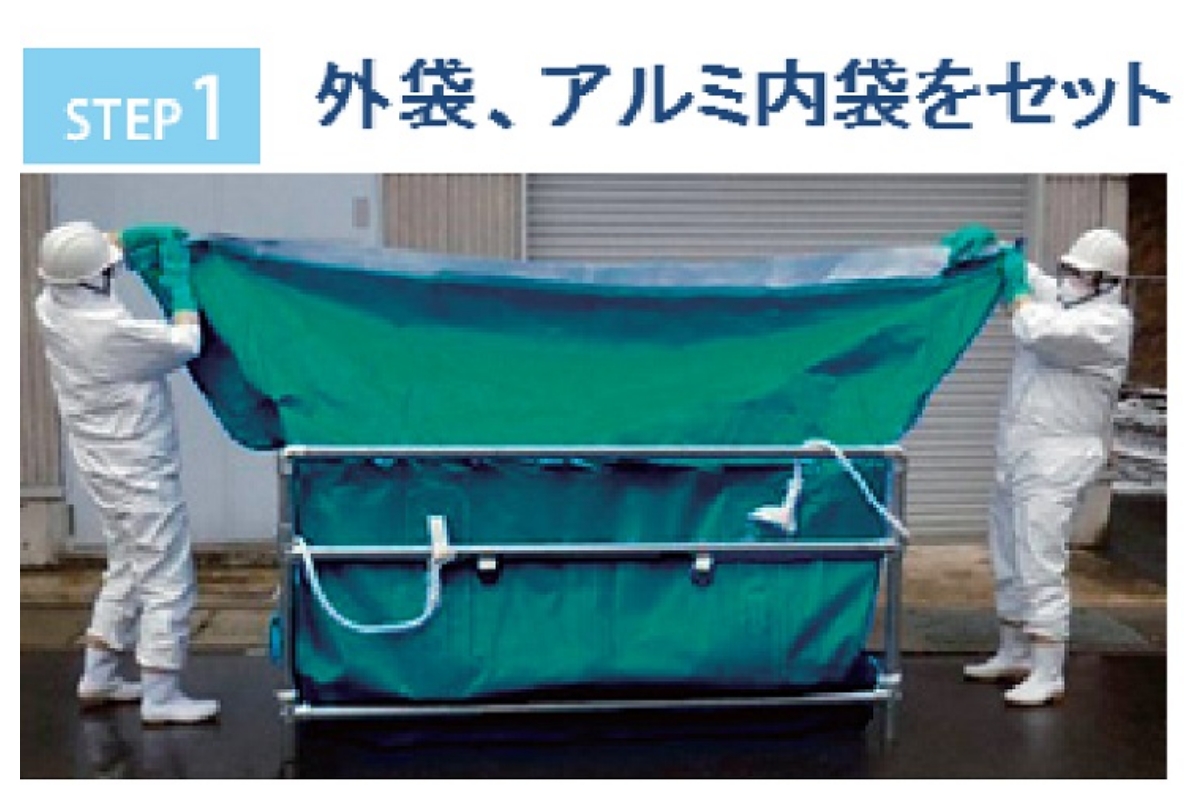
STEP2 Housing livestock
Attach a protective cover to the head where the horns and teeth protrude to prevent damage to the outer bag and aluminum inner bag. Protective covers are attached to the limbs using a sling or similar device. *Scene of a hands-on training session at the Kyoto Prefectural Office (model cow being hoisted)
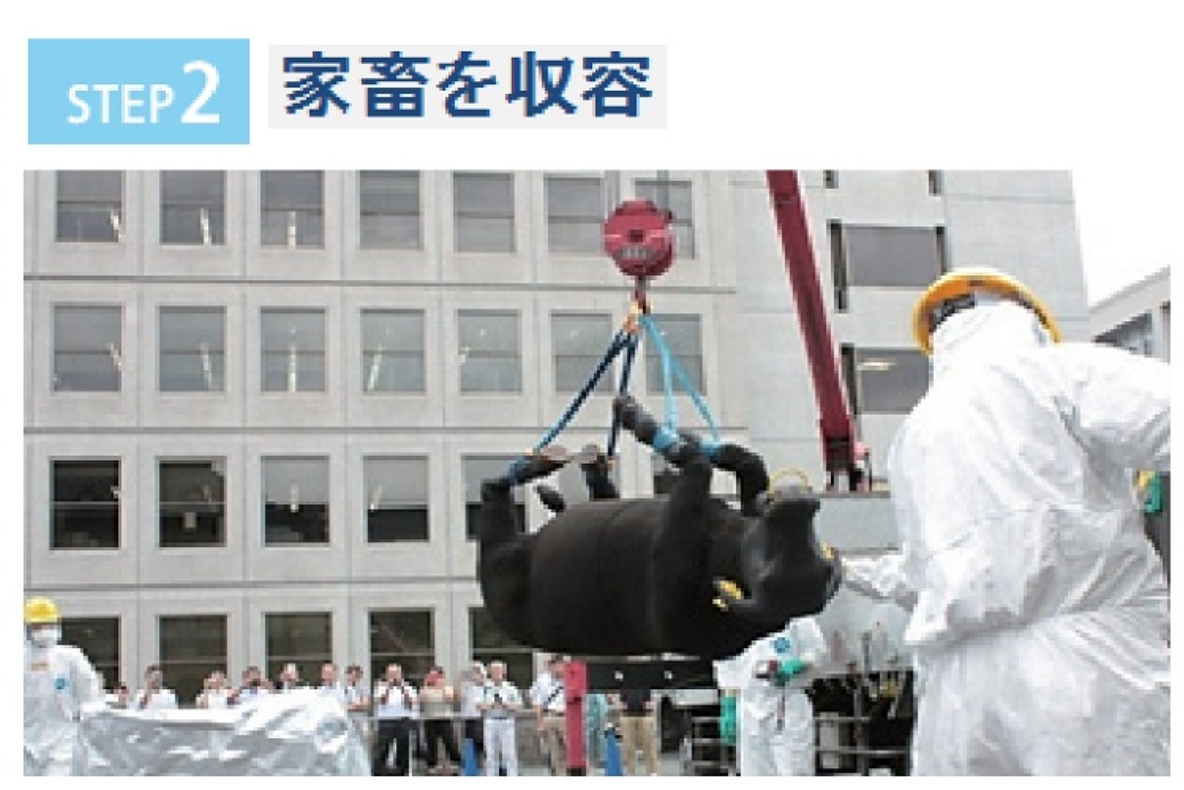
STEP3 Heat-seal the aluminum inner bag housing opening and disinfect
Once the livestock are placed in the quarantine bag, the aluminum inner bag opening is heat-sealed and sealed. After that, make sure there are no gaps in the heat seal, and disinfect the bag. Do not use chlorine-based disinfectants, which can cause dioxin emissions during incineration.
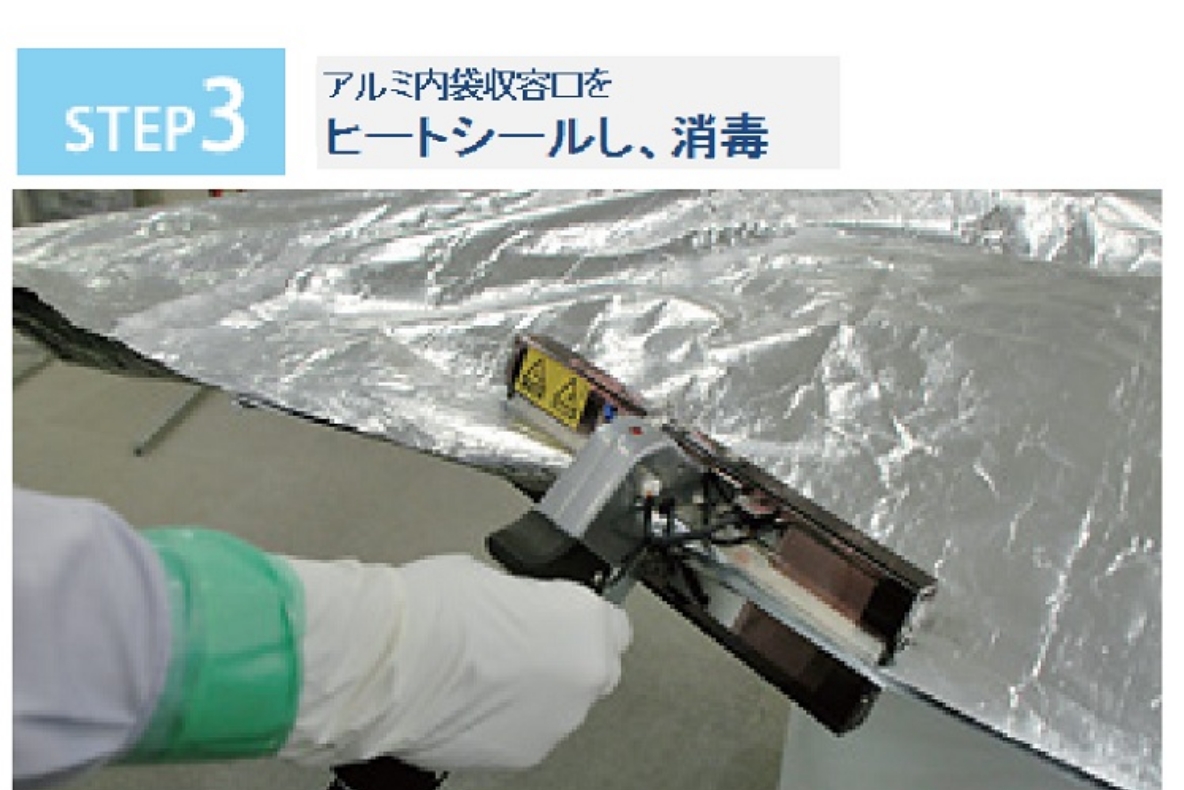
STEP4 Seal the outer bag, tighten it with a belt, and load it into the vehicle.
After folding over the outer bag’s housing opening three or four times, it is joined and sealed with a buckle. After that, the fastening belts are tightened. The outer bags are also disinfected and loaded onto the transport vehicle by crane. 3 persons are required for efficient operation.
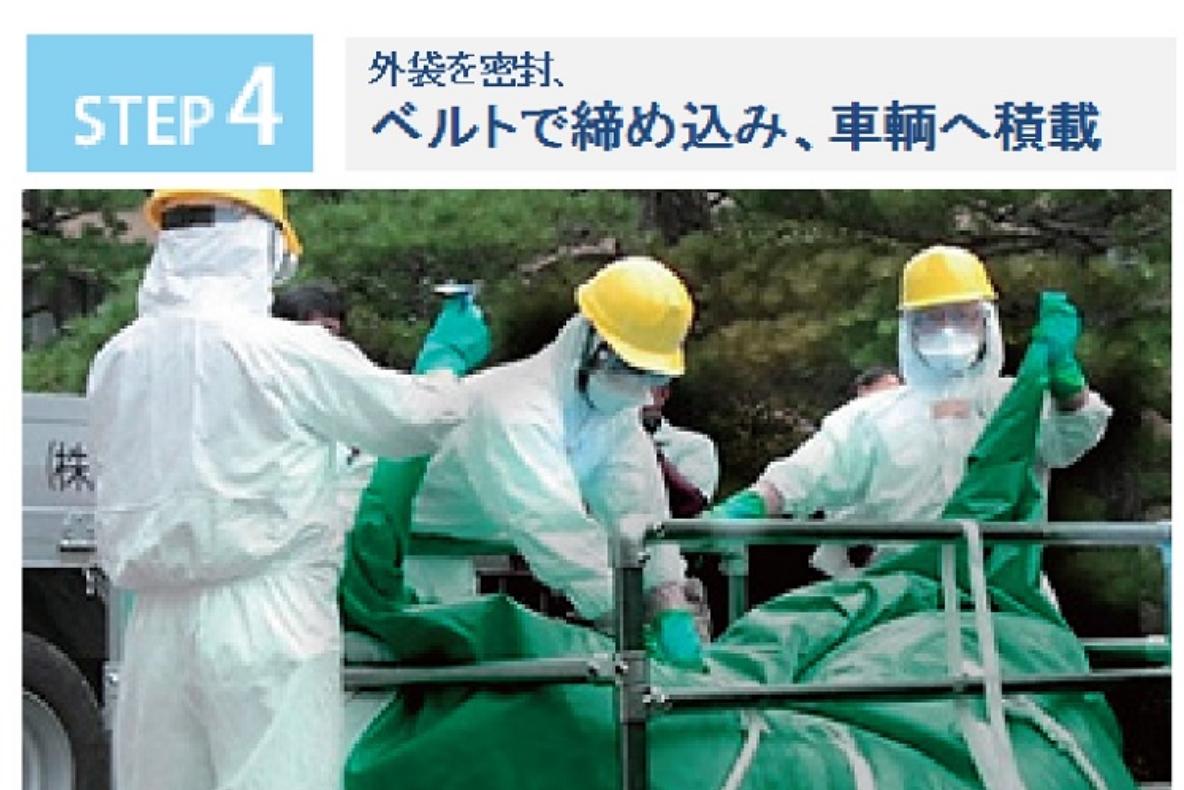
*Metal frames are sold separately. When housing livestock, it is more efficient to use a metal frame that can securely hold the quarantine bag in place.
*Heat sealers are sold separately. Please contact us for product selection.
Future Prospects, Nationwide Support for Safe Transportation of Large Disposition Livestock
Materials to safely transport large disposal livestock.
The foot-and-mouth disease (FMD) virus is tiny at 30 nm (nanometers) and is endemic in the Asian region, posing a constant threat. Once a livestock epidemic like FMD spreads, it can cause direct damage on the order of hundreds of billions of yen. The damage to the livestock industry due to harmful rumors can also be significant. The Livestock Infectious Disease Prevention Law stipulates that disposed livestock must be incinerated or disposed of for burial. However, facilities that can incinerate large livestock are limited, and in areas where it is difficult to secure burial sites, such as urban areas or near rivers, livestock must be transported to faraway treatment facilities or disposal sites. In order to transport the virus to a treatment facility or disposal site, measures must be taken to prevent its dispersal. Conventionally, there are no containers that can be used to transport large disposal livestock such as cattle in an airtight container that can be folded compactly when not in use.
Meanwhile, the Consumption and Safety Bureau of the Ministry of Agriculture, Forestry and Fisheries was developing a rendering system that can be moved and heated for disposal when burial is difficult. Under these circumstances, Kyoto Prefecture, based on its extensive experience with quarantine measures for highly pathogenic avian influenza (HPAI) and foot-and-mouth disease (FMD), has been addressing the issue of safe transportation of disposed livestock, and has called on Taiyo Kogyo and Kyoto Sangyo University to join an industry-academia-government collaborative development team to apply for a research project by the Ministry of Agriculture, Forestry and Fisheries (MAFF) to develop and establish a transportation method that can contain 1,000 large pieces of disposed livestock while containing the virus. The team, in collaboration with industry, academia, and government, applied to the Ministry of Agriculture, Forestry, and Fisheries for a research project to develop transportation materials and establish a transportation method that can accommodate 1,000 large animals for disposal while containing the virus and saving space in case of emergency.
Stringent requirements for quarantine of large disposal livestock
Specific challenges in developing a quarantine material that could safely transport large livestock, such as disposed cattle, included the following
- That the foot-and-mouth disease (FMD) virus is 30 nm (nanometers) in size, so this very small virus can also be completely contained
- Lifting strength to withstand 1,000 kg for transporting cattle
- Toughness that will not be torn by hooves or horns.
- Ability to contain and seal quickly and reliably, even in difficult quarantine operations
- The material must not be affected by chemical reactions with disinfectant solutions
- Ability to release gases emitted by livestock
- No harmful substances shall be emitted when incinerated.
- Easy and space-saving stockpiling during normal times
In order to satisfy materials and functions that simultaneously satisfy these severe challenges, the Kyoto Prefectural Government [On-Site Capability], which has a wide range of experience, including the Livestock Health Center, proposes methods for function, storage, and transportation and accumulates basic data, and Taiyo Kogyo [Manufacturing Capability], which has all the technology and know-how in membrane surface technology based on its philosophy of being a company contributing to environmental improvement, examines materials and processing methods and materializes products with its technological capabilities. The Molecular Research Center for Infectious Diseases at Kyoto Sangyo University, which is capable of analyzing at the genetic level, verified the sealing and transportability of the product using an alternative virus. After more than 10 meetings and actual tests, a quarantine material that satisfies all the requirements was born.
Deployment in each prefecture in case of emergency
It is best that emergencies never occur, but in light of internationalization, increased movement of people and trade, and the influence of geographical features such as the arrival of migratory birds, it is necessary to take all possible measures to prepare for the risk of outbreaks of livestock diseases. However, there is still a question of deploying as much quarantine material as possible on a stand-alone basis. We would like each prefecture to consider deploying a small amount of quarantine materials in preparation for emergencies, and to consider sharing them with each other in case of emergency. Taiyo Kogyo is supporting the introduction of the “Close Max” quarantine bags to prefectures that are working to prevent the spread of livestock infectious diseases.
Support for quarantine exercises and training sessions
Workability and functionality you can understand in quarantine exercises and training sessions
We support quarantine exercises and training sessions held by local governments and other organizations. Please check out our capabilities at your next event.
Program to check the functionality of the quarantine bag
Please incorporate a program to confirm the workability and functionality of the “Close Max” quarantine bag in your quarantine exercises and training sessions. The “Close Max” quarantine bag, jointly developed over a period of two years through an industry-academia-government collaboration between Taiyo Kogyo, Kyoto Sangyo University, and Kyoto Prefecture, is a quarantine material developed to safely and efficiently house and transport livestock for disposal, from large livestock such as cattle to small poultry such as chickens. Its workability and functionality, which meet the high specifications required in the field, have already been well received by many institutions.
We support quarantine exercises and training sessions held by local governments and other organizations. Please check out our capabilities at your next event.
*On-site training session held at Kyoto Prefectural Government in July 2014. Approximately 150 participants, including livestock health officials from 28 prefectures, including the Ministry of Agriculture, Forestry and Fisheries, attended.

Customer feedback received after the quarantine exercise
From Livestock Health Officials
- By seeing and touching the actual product, as well as watching the demonstration work, we felt that the “Close Max” quarantine bag would be effective for initial quarantine.
- I thought that the accommodating operation might be difficult, but it seems that anyone can easily work with it.
- It is safe to deal with gas outbreaks from livestock and not leak the virus.
- Work was efficient due to the large capacity when housing poultry. Stress of quarantine workers can also be reduced.
- We were also able to experience heat sealing of the aluminum inner bag and felt that the heat sealed area was strong enough.
- Prevents damage from horns, teeth, and hooves
- sewing process
From the livestock farmers
It could be transported without dissipating the pathogen and seemed strong enough.
It would be great if they could be stocked by the appropriate agencies in case of an emergency.
It is a reliable means of transportation in the event of an outbreak. We would like to ask for sufficient explanation to surrounding farmers before implementing quarantine measures.
Quarantine Exercise and Workshop Support Contents
Our staff demonstrates work procedures during a quarantine exercise
We will bring optional venting valves, optional metal frames, heat sealer, and model cattle to demonstrate the process from frame assembly to quarantine bag set-up to containment and sealing.
Please purchase a set of “Close Max” bags to be used for the exercise in advance.
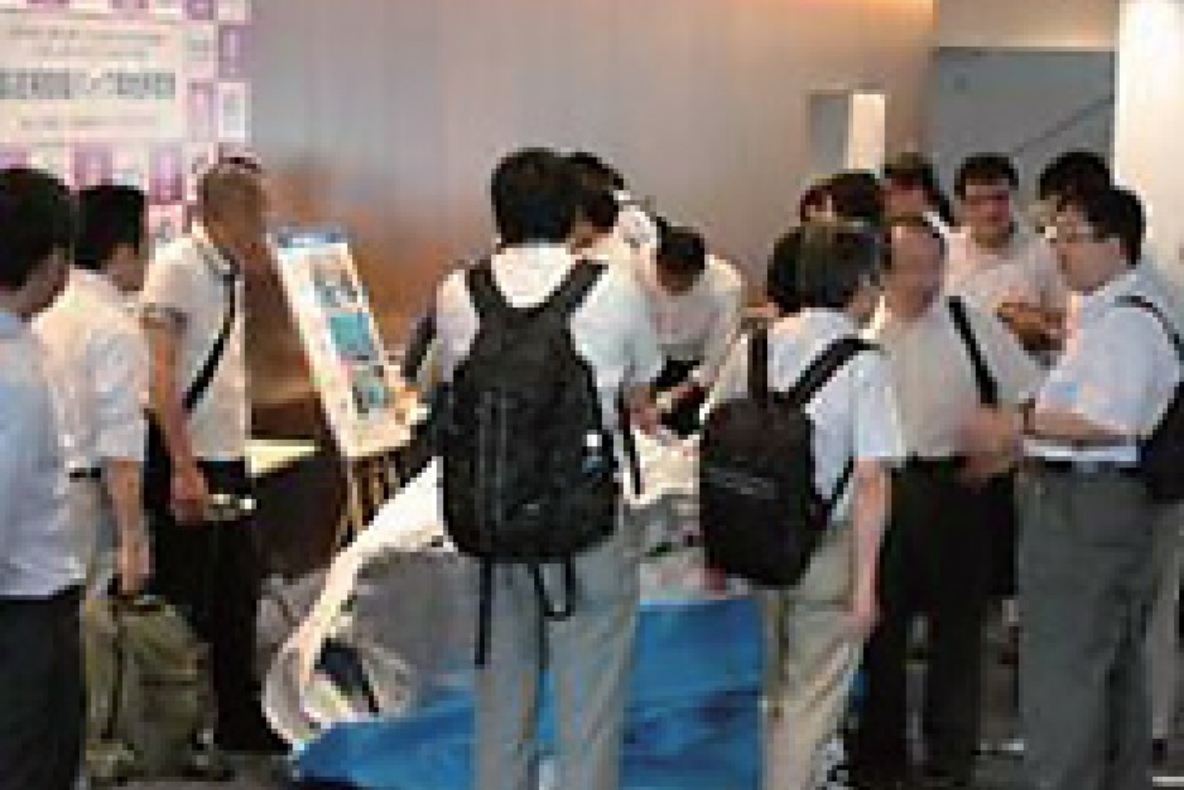
Explanation of products at workshop
The product will be explained using a miniature version of the “Close Max” quarantine bag, slide presentations, product pamphlets, and materials used.
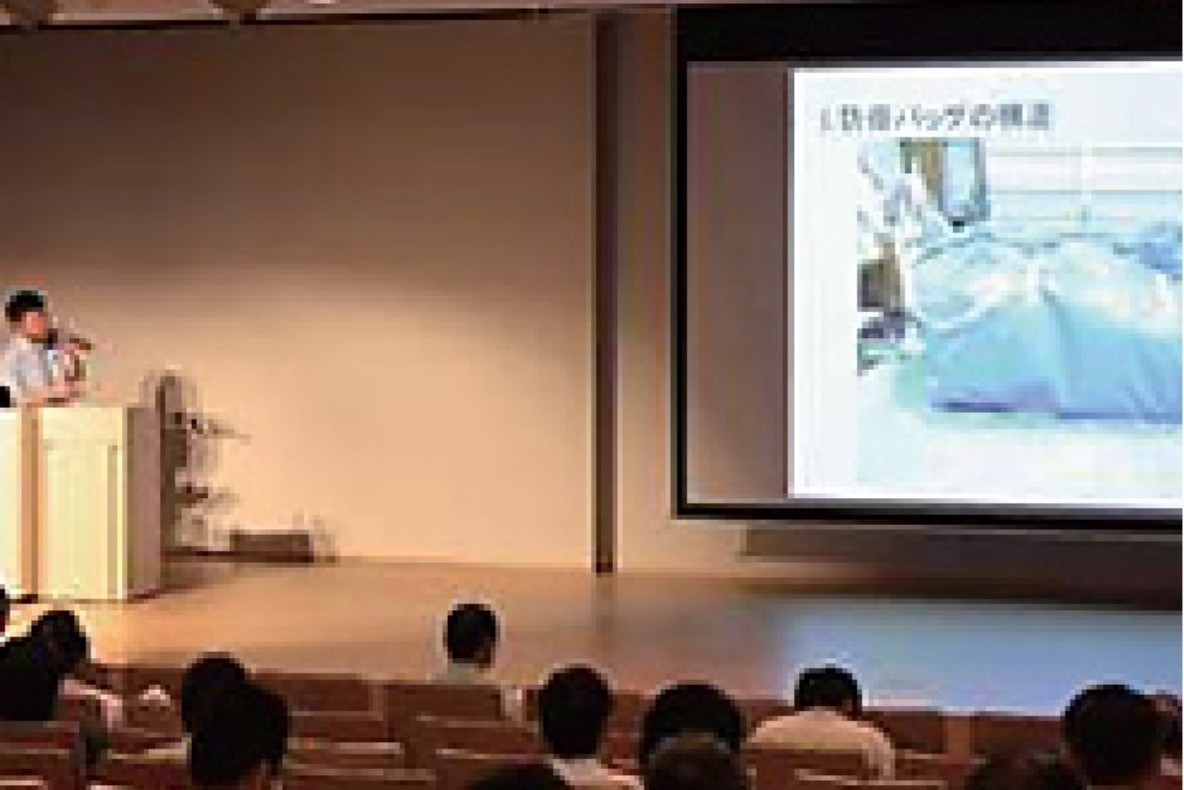
関連リンク
Specifications of the "Close Max" quarantine bag
Outer bag
- Thickness 0.75mm
- Special tarpaulin sheet made of EVA
- High-frequency welder welding process that achieves sealing without seams
- Tapered housing opening smoothly accommodates even large livestock
- Size when stored: 210cm (L) X 110cm (W) X 100cm (H)
- Capacity weight: 1,000 kg (equivalent to 1 cow, 2 pigs~, 300-400 chickens)
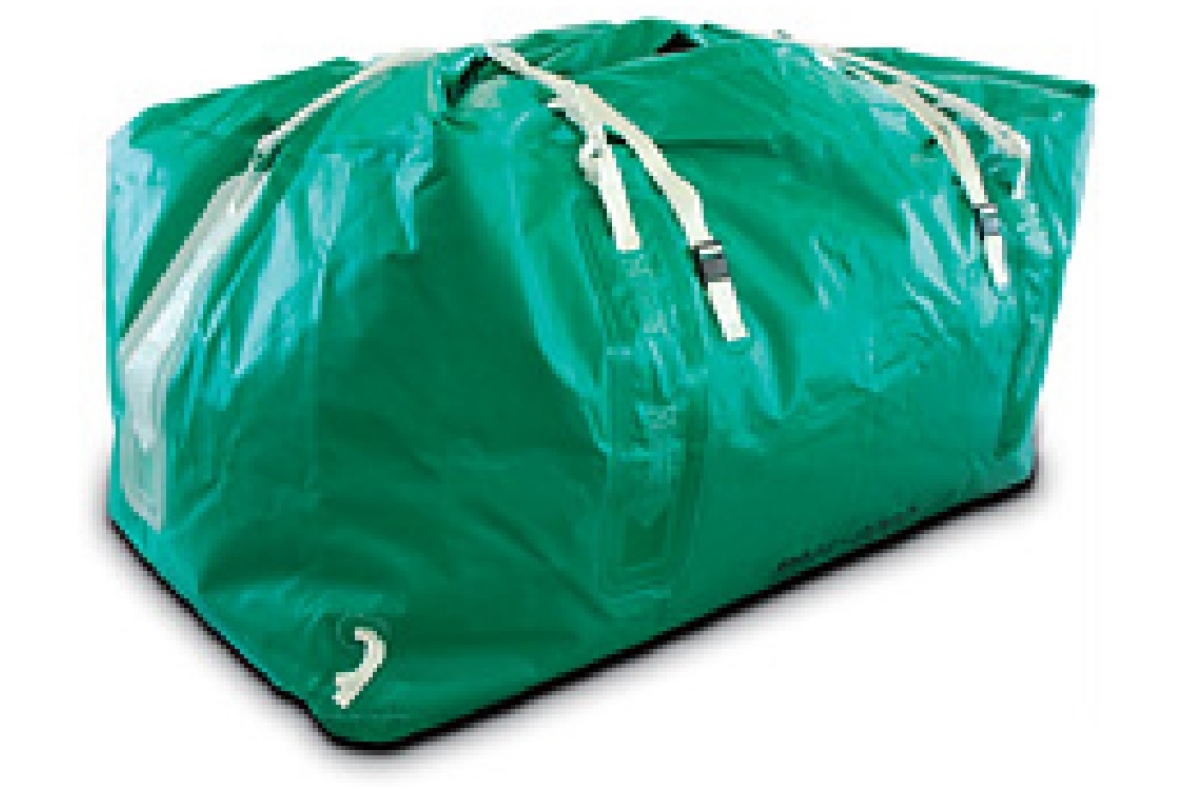
Aluminum inner bag
- Aluminum 7-layer film
- Laminated film and heat-sealing process that even 30nm (nanometer) viruses cannot penetrate
- After housing livestock, a heat sealer (sold separately) can be used to seal gaps
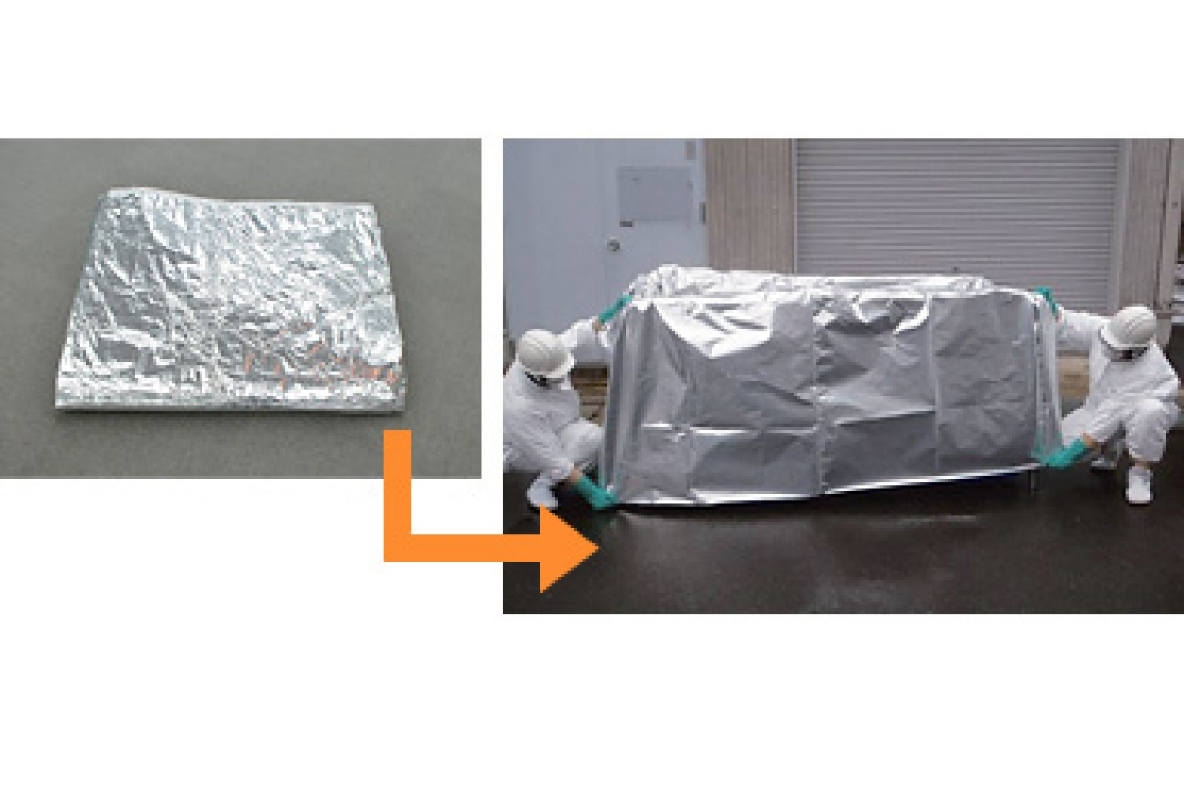
Protective covers (for heads and hooves of horns, teeth, etc.)
- Porous structured PET nonwoven fabric
- Prevents damage from horns, teeth, and hooves
- sewing process
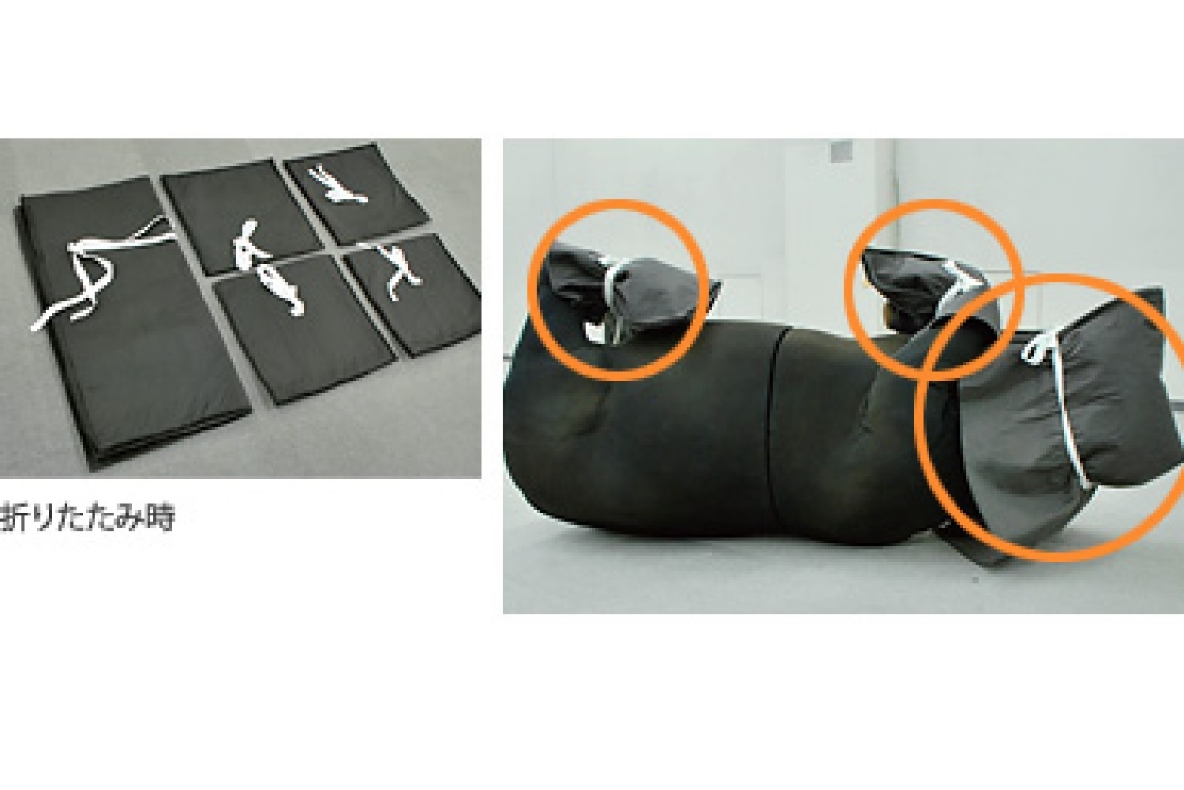
Performance and Standards
Lifting performance
| item | standard value |
|---|---|
| Content quantity | 0 80+5% |
| Load carrying capacity | 2t x 70 times repeated, then 5t x 1 time |
| Test method | JIS.Z. 1651(2008)6.4.1 |
Incinerability
| item | Incineration Tests |
|---|---|
| Standards | Order for Enforcement of the Law Concerning Special Measures against Dioxins and Waste Disposal and Public Cleaning |
| Assessment | Must be less than the standard |
*Test details: Dioxins and toxic substances in emission gases and incinerated ash were investigated by incinerating quarantine bags containing dead cattle and pigs in a large incinerator. Chlorine-based disinfectants were not used.
Virus protection
(Verified by the Molecular Research Center for Infectious Diseases, Kyoto Sangyo University)
| item | capacity test |
|---|---|
| Test time | 72 hours |
| Assessment | No viral leakage at the 30 nm level after storage |
*Test details: Feline calicivirus was used as a surrogate virus, and the virus solution was sprayed into a quarantine bag containing dead cattle; after 72 hours of storage, the absence of virus leakage from the aluminum inner bag, quarantine bag, and vent valve was evaluated using real-time PCR (rRT-PCR method).
transportability
(Verified by the Molecular Research Center for Infectious Diseases, Kyoto Sangyo University)
| item | transportation test |
|---|---|
| Test distance | 100km |
| Assessment | No viral leakage at the 30 nm level after driving. |
Test description: Feline calicivirus was used as a surrogate virus, and the virus solution was sprayed into a quarantine bag containing dead cattle. After driving 100 km in a transport vehicle, the absence of virus leakage from the aluminum inner bag, the quarantine bag, and the vent valve was evaluated by real-time PCR (rRT-PCR method).
handling instructions
When you purchase the “Close Max” quarantine bag, we will provide you with an “Instruction Manual” that introduces a series of operations. The manual also includes detailed information on the workflow so that it can be used as a quarantine manual. It is also possible to provide the manual in data format.






